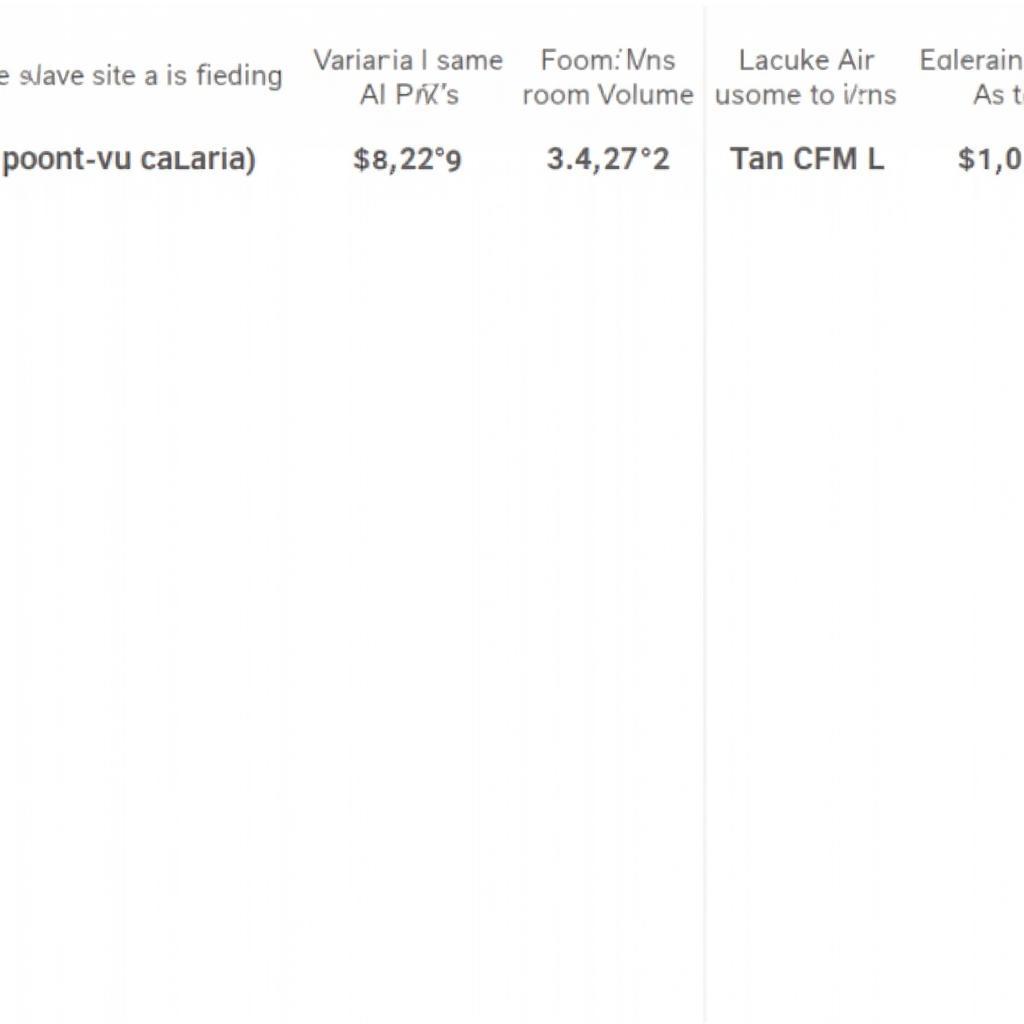Proper ventilation is crucial for maintaining a healthy and comfortable indoor environment. Whether you’re dealing with a stuffy room, excess humidity, or harmful fumes, a well-calculated ventilation fan can be the perfect solution. But how do you know what size fan you need? This is where understanding the calculation of ventilation fan capacity in Excel comes in handy.
 Ventilation Fan Sizing Spreadsheet
Ventilation Fan Sizing Spreadsheet
Determining the right ventilation fan capacity involves considering several factors, including the size of the room, the intended use of the space, and local building codes. While you can find general guidelines and online calculators, using Excel allows for more precise calculations tailored to your specific needs.
Factors Affecting Ventilation Fan Capacity
Before diving into the Excel calculations, it’s essential to understand the key factors influencing fan capacity:
- Room Volume: The volume of the room is the most crucial factor. It’s calculated by multiplying the room’s length, width, and height.
- Air Changes per Hour (ACH): This refers to how many times you want the entire volume of air in the room to be replaced with fresh air every hour. The required ACH varies depending on the room’s purpose. For instance, a bathroom typically requires a higher ACH than a bedroom.
- Ductwork: If your ventilation system includes ductwork, its size and layout can affect airflow and, consequently, the required fan capacity.
Calculating Ventilation Fan Capacity in Excel
Here’s a step-by-step guide on how to calculate ventilation fan capacity using Excel:
-
Open a new Excel spreadsheet: Start by creating a new spreadsheet in Excel.
-
Create Input Cells: In separate cells, enter the following:
- Room Length (feet):
- Room Width (feet):
- Room Height (feet):
- Air Changes per Hour (ACH):
-
Calculate Room Volume: In a new cell, use the following formula to calculate the room volume:
=Room Length * Room Width * Room Height -
Calculate Required CFM: To determine the required cubic feet per minute (CFM) for your fan, use this formula:
=Room Volume * ACH / 60Note: This formula divides by 60 to convert air changes per hour to cubic feet per minute.
-
Consider Ductwork: If your system uses ductwork, you might need to adjust the CFM upwards to account for pressure loss. Consult ductwork sizing charts or an HVAC professional for accurate adjustments.
Using Your Calculation
Once you’ve calculated the required CFM, you can start shopping for a ventilation fan. Remember to:
- Round Up: Always round the calculated CFM up to the nearest standard fan size.
- Check Local Codes: Some areas have specific building codes regarding ventilation, so ensure your chosen fan complies.
Example Calculation
Let’s say you have a bathroom that’s 10 feet long, 8 feet wide, and 8 feet high. You want 8 air changes per hour. Using the steps above in Excel, the calculation would look like this:
- Room Volume: 10 8 8 = 640 cubic feet
- Required CFM: 640 * 8 / 60 = 85.33 CFM
You would then round up to the nearest standard fan size, likely 90 CFM or 100 CFM.
Benefits of Using Excel for Calculation
While online calculators can be helpful, using Excel for ventilation fan capacity calculations offers several advantages:
- Customization: Tailor the calculations precisely to your room dimensions and desired ACH.
- Documentation: Save and easily refer back to your calculations for future reference.
- “What-if” Analysis: Easily adjust individual parameters to see how they impact the required CFM, allowing you to explore different ventilation options.
Conclusion
Calculating the correct ventilation fan capacity is crucial for ensuring effective ventilation in your space. By utilizing Excel, you can accurately determine the required CFM based on your specific needs, leading to a more comfortable and healthier indoor environment. Remember to always prioritize proper installation and consult with a qualified professional if you have any doubts or require assistance with complex ventilation systems.


